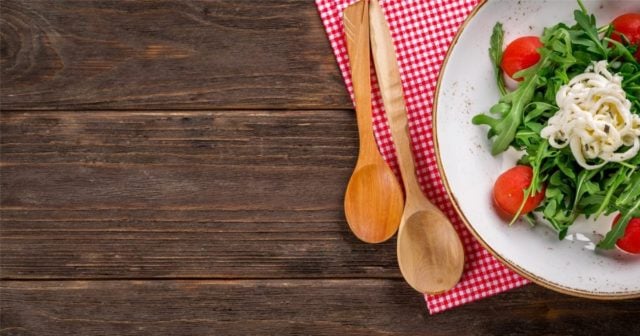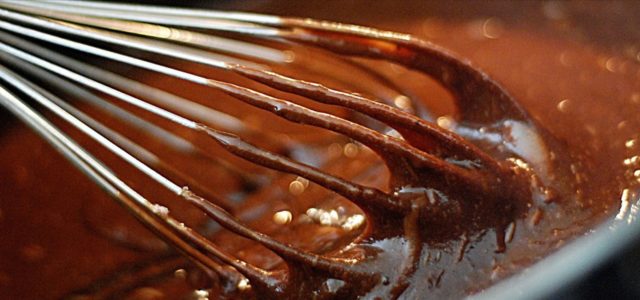A good skill to have as a young adult or adult is cooking. It can open up a world of opportunities to you and not to mention, save you a lot of money. But if you’ve been getting by on those dull as ever cheap knives and hand-me-down cutting board, it’s time you give your kitchen an upgrade. Here’s where you can start, as recommended by professional chefs Sabrina Sexton, and Culinary Institute of America Culinary Arts Associate Professor Lance Nitahara.

1. Three Knives
Both chefs recommend that the three essential knives you must own include a chef’s knife, a serrated bread knife, and paring knife. They say you absolutely don’t need one of those fancy knife blocks! An added tip is to choose forged knives over stamped ones as they are higher in quality.
“To me, these three knives would cover basically anything you would need to cut,” Sexton says. “And if I was stuck on a desert island, and I could still cook, these three knives would be what I would need.”

2. Knife Sharpener
So, you’ve got yourself three knives; how do you make sure they last as long as possible and they don’t get dull over time? You invest in a knife sharpener, of course! Professional chefs are skilled in using sharpening stones, but a commercial knife sharpener is perfectly good enough for a home cook. How often you need to sharpen will depend on several factors like how often you use them, the quality of your knives, etc.
“I would say sharpen your knives when they get dull,” Nitahara says. “If you’re using your chef’s knife on a daily basis, I would say once every week to once every two weeks, depending on what you’re cutting as well.”

3. A Cutting Board
“I have a very pretty little marble board that sits out on my kitchen counter, but it’s more for show,” says Sexton. This, she says, is because glass and marble can dull your knives quickly. Instead, she recommends investing in a wooden or plastic one instead. She also says you should replace your cutting board every two years or so, because the grooves that build up over time can lead to a buildup of bacteria.

4. A Non-Stick Pan
A non-stick pan is an essential in every kitchen, especially since it can make the life of a beginner or home cook a lot easier. But Nitahara says you don’t need an entire non-stick cooking range, that one or two would do just fine. “[Even just] one non-stick pan might be good if you do a lot of egg cookery,” she says. And since you’re only buying a couple, you can ensure that they’re best quality that you can afford.

5. Cast-Iron Pan
Along with a non-stick pan, you’ll also want to get yourself a cast-iron pan. It’s the best piece of equipment for even heat distribution. “If you’re trying to caramelize the surface of something, which really develops flavor in something like a piece of red meat or poultry, [a cast-iron pan is] the best sort of go-to thing,” says Sexton.
Not only are cast-iron pans inexpensive, they can last literally forever (if you know how to take care of them). You just need to ”season” them often, which is to add lubricant to the pans to ensure the food doesn’t stick to it.

6. Stainless Steel Pots & Pans
Sexton and Nitahara both recommend that most of your cookware should be stainless steel. They say that this is because stainless steel has better conduction, and it will last you a long time. “They’re a little harder to wash, a little heavier, but they’re going to last longer,” says Nitahara.

7. Rondeau Pan or Dutch Oven
A rondeau pan or Dutch oven has a wide surface area and fairly high sides of at least 4 to 6 inches. Most people would probably refer to them as “stew pots”. According to Sexton, “It’s good if you want to do any braises or stews.”

8. Blender
Nitahara says a kitchen wouldn’t be complete without a blender, especially for making soups and purees. He also says this is one of the kitchen gadgets that is worth spending a little bit more on. A higher quality blender will not only do the job much better, quicker, and more efficiently, it will also last longer.
“The cheaper you go on blenders and food processors, you get what you pay for,” he says. “If you try to get it on a budget you might be buying [a new] one sooner than you think.”

9. Immersion Blender
If you’re not ready to invest in a good blender, or if you have limited counter space, an immersion blender might be the right choice for you. A good immersion blender or handheld blender can do anything from making smoothies to chopping onions.
“It’s a good jumping-off point for a blender because it doesn’t take up any particular space; it doesn’t have to sit on your counter. It’s pretty versatile, pretty inexpensive,” says Sexton.

10. Food Processor
If you have the money, Nitahara recommends getting both a blender and a food processor because they both perform different tasks. A blender is ideal for smooth purees while a food processor is best for coarse chopping and grating. “If I had a choice I don’t know which one I would choose because they both are essential,” he says.

11. Pressure Cooker
A pressure cooker might seem intimidating at first, but once you get the hang of it you’ll realize how much easier they make your life and how much time they can save you in the kitchen. They cut the cooking time of several dishes by half or even more!
“I make wild rice in 20 minutes, whereas if you make wild rice in a pot you’re looking at cooking it for over an hour,” says Nitahara.

12. Digital Thermometer
One of the most difficult aspects of cooking, especially for novice cooks, is getting the temperature of meat just right. Most of the time, you may end up overcooking your meat, leading to a dry and tasteless meal. You can save yourself a lot of trouble by investing in a digital thermometer – even a cheap one will do the job, but you can go for some of the fancier ones as well.
“If you want to roast a chicken or you want to cook meat to a certain done-ness or whatever, an instant read is great,” Sexton says.
“I love digital thermometers that have a probe with a cable so that if I’m roasting something, I put that thermometer into the roast, throw that in the oven, and keep my thermometer outside the oven and set the alarm to go off when I have a target temperature that’s reached,” says Nitahara.

13. Microplane
Most people have graters in their kitchen, but you shouldn’t overlook the usefulness of a microplane either. “They’re really great if you want to grate things really finely, parmesan cheese and things like that. It was originally designed for woodworking,” says Nitahara.

14. Wooden Spoons
According to Sexton, wooden spoons are the best choice when it comes to stirring things on a hot stove. They are heat resistant, so you won’t burn your hand like with a metal spoon, they won’t melt like plastic would, and they’ll last you a long time. Nitahara adds that a wooden spoon that’s flat on one side makes it much easier to scrape things off the bottom of your pan.

15. Whisk
A whisk is another kitchen equipment that is indispensable, and Nitahara recommends looking for ones with thin wires. “If you’re going to be making emulsions like vinaigrettes, hollandaise sauce, and a few others, if you get your wires too big and thick … you’re not going to be able to emulsify liquids like that as well,” he says.

16. Rubber Spatula
A rubber spatula is also grate for getting things stuck to the bottom of a pan and wiping the bowl clean. It’s a lifesaver especially if you’re into baking. Nitahara also says that you should invest in a high quality silicone spatula that can “stand temperatures upward of 375, 400 degrees so that you’re not melting your spatula in the pan.”

17. Salad Spinner
Even though it’s called a salad spinner, Nitahara says that’s not the only job it’s good for. Apart from drying your lettuce, you can use a salad spinner for several other purposes from washing herbs to mushrooms. “They soak up a lot of water,” he adds.

18. Vegetable Peeler
Peeling vegetables with a knife can be a cumbersome task. It’s time consuming, finicky, and causes more wastage than necessary. This is why a vegetable peeler is another thing that most professional chefs (and home cooks) swear by.
Peeling anything from potatoes and carrots to cucumber and zucchini becomes a cinch, and you can also use them for other purposes like shaving chocolate for decoration on desserts and shaving cheese to put on top of pasta. Sexton says she prefers a Y-shaped vegetable peel to the more traditional straight ones as they provide a better grip.

19. Bonus Items
Along with everything we’ve listed above, Sexton and Nitahara say there are a few other basic necessities that will ensure that you have a fully equipped kitchen. These include: tongs, mixing bowls, a ladle, a slotted spoon, measuring cups and spoons, potholders, baking sheets, a corkscrew, a serving spoon, and a can opener.




